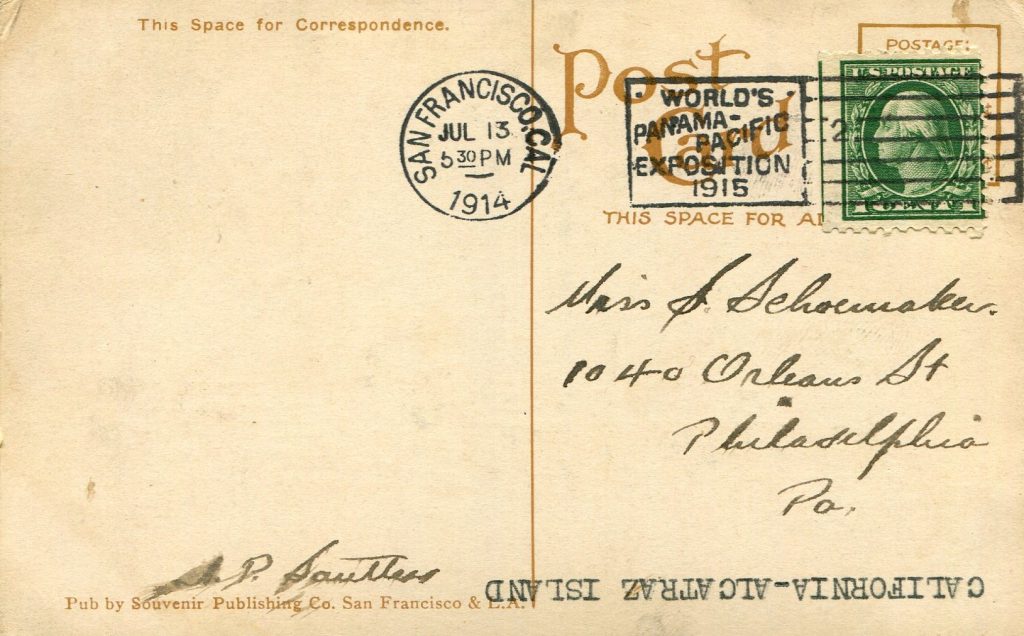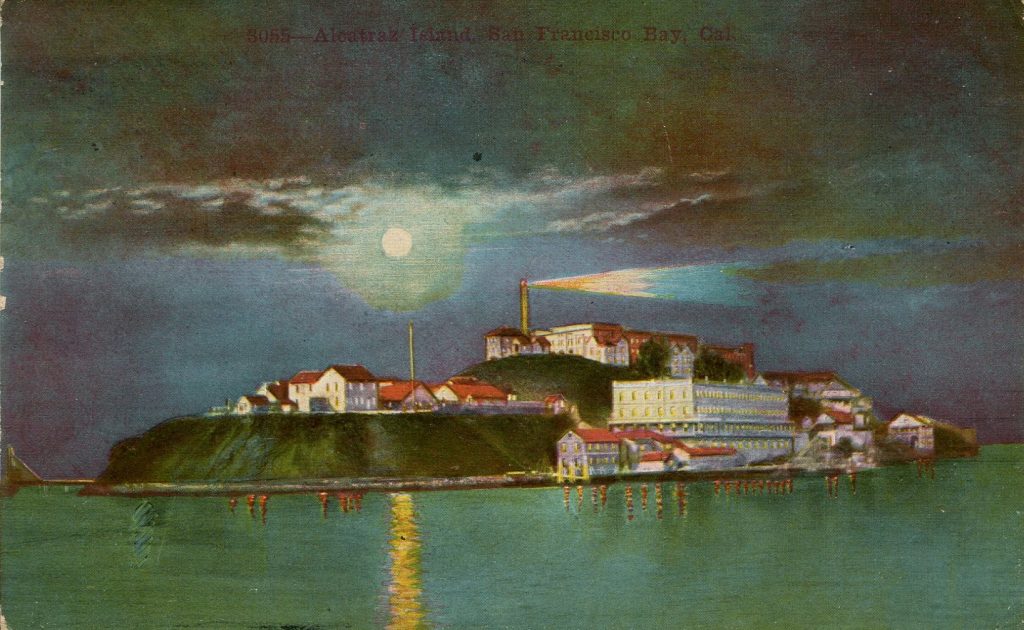Ray Hahn
Monday, July 13, 1914
It is unlikely that anyone reading Postcard History recalls the events of July 13, 1914, therefore let’s catch up on the history of that day.

The weather:
The United States Department of Agriculture (Weather Bureau) offered the following forecast for the San Francisco, Oakland, and vicinity: Fair, Monday, except foggy in the morning; light winds from the northwest. Most west coast cities should expect temperatures in the mid-eighties to 102 in Phoenix and 110 in Yuma. Also, warm in the heartland and on the east coast expect light winds and temperatures in the low-nineties.
The general news:
The reporting of the day was disturbing. The front page of the San Francisco Examiner featured a political cartoon suggesting that a “clean sweep” of Mexico City was imminent since José Victoriano Huerta (the 39th President of Mexico) was about to resign under pressure from rebel factions. Elsewhere, European politics was in chaos; the world economy, political unrest, and universal living conditions caused society to teeter on the brink of war.
Along with the obituary of United State Supreme Court Justice Horace Harmon Lurton, other briefs found in the Examiner told of how a 10-feet section of St. Augustine Street in Paris collapsed (apparently into their Metro system) after severe thunderstorms and how a veteran died after a fall caused by a fellow nursing home resident who pushed him during an argument over Home Rule in Ireland. To complete the gruesome list of events, it was reported that Mrs. Ethel McGrew Sheffield … poured gasoline over her clothes and then struck a match to burn herself to death to escape a life of suffering.
The postcard:

Other events of the day were about postcards. No records were kept until 1926, but it is safe to say that thousands were postmarked Jul 13 1914 – including the one above. Sometime during July 13, 1914, or the day before (speculation is so much fun) Albert P. Sautter addressed this postcard to Miss S(?) Schoemaker at 1040 Orleans Street in Philadelphia, Pennsylvania. A thorough search for a Miss Schoemaker yielded nothing of value except, she may will have donated the card to her local library’s picture file. The card was cataloged simply: CALIFORNIA-ALCATRAZ ISLAND.
The gathering of images was a very common assignment for young librarians in the early 20th century. There was no Google Image File in those days. Libraries often served patrons who made inquiries about geographic and many related topics with postcards. Even into the mid- 1960s, the practice continued – I know from personal experience.
Alcatraz history:
From Fisherman’s Wharf in downtown San Francisco, Alcatraz can be seen in the bay one and a quarter miles offshore. At any time of the day or night there is a mysterious aura about the place. What most visitors know before they arrive is at one time it was a federal prison and it had several notorious criminals in residence. Likely the most known was a Chicago crime-boss who thought evading taxes and sparring with the Federal Bureau of Investigation was high sport. He lost; his name was Alphonse Gabriel “Scarface” Capone.
The other Alcatraz prisoner who is less well-known but much more interesting was Robert Franklin Stroud, aka, The Birdman of Alcatraz. As a convicted murderer, Stroud served most of his sentence in the federal prison at Leavenworth, Kansas. He was transferred to Alcatraz in 1942, but regulations prohibited him from keeping his birds. Nevertheless, his nickname stuck!
Stroud died November 21, 1963, at age 73. Alcatraz closed on March 21, 1963, after 29 years of service as a federal prison. It would be of interest to many to know Stroud’s thought about the closing of the prison he lived in for so many years, just eight months before his own demise.
* * *
You may remember that we started with a Postcard History lesson that involved Albert Sautter. He graduated from college, circa 1905 with a degree in Marine Engineering. In 1906 he moved to San Francisco to work for Moore Shipbuilding Company in Oakland, California. The Moore Company relied heavily on the government for contracts. It is likely that every bit of construction material used to create the newly designed western U.S. Military Prison at Alcatraz arrived on the island in a Moore Company vessel. Including some human cargo.
It is worth mentioning that during World War I Alcatraz was used as a detention center for conscientious objectors.
I was able to visit Alcatraz on two separate occasions in the 1990’s. On my last trip we were greeted with an announcement that a former prisoner was signing his book about life on Alcatraz for a somewhat reasonable cost. I passed on buying the book but was amused by the greeting.
As late as the 1970’s, my high school’s library (in which I spent many hours, both as an aide and as a reader) had a “vertical file” of newspaper clippings, pamphlets, and other such ephemera, alphabetized by subject. As far as I recall, the file contained no postcards.
I enjoyed reading your postcard story, Ray. The information and the way you wrote it captured my attention. I visited San Francisco about four years ago , and took a boat trip around the harbour. Although it didn’t stop at Alcatraz we heard lots of fascinating details about it from the commentator on the boat.